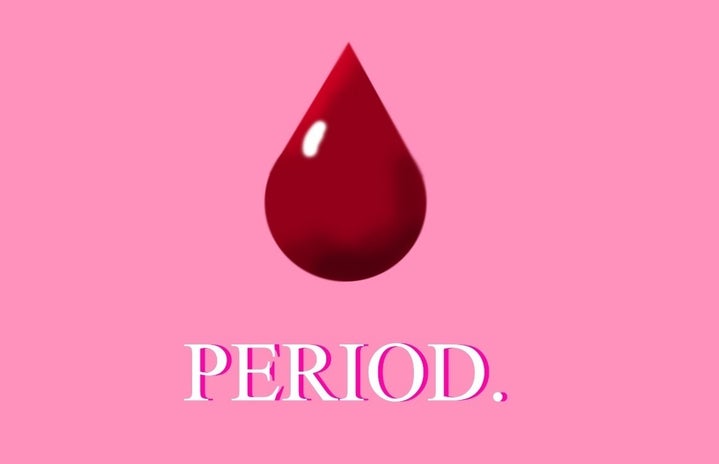On Saturday, October 19, people all over the United States took part in rallies as part of National Period Day, an event organized by PERIOD. Inc.
PERIOD was started by Nadya Okamoto and Vincent Forand in 2014 with the goal of increasing access to menstrual products for those in need. Duke’s own chapter of the organization is participating in National Period Day, which focuses on product accessibility and aims to challenge state policies that allow sales taxes on menstrual products. While this may not seem like an issue to those who are unfamiliar with the “tampon tax”, it is an issue of parity and accessibility. Sales taxes are typically levied on “non-essential” items, which has unfortunate connotations when applied to menstrual products and can create barriers for individuals who may not be able to afford them. While public perception of periods has evolved over the years, there is evidently still work to be done.
The way that menstruation is viewed today still roughly reflects the opinions of the past. Menstruation was and continues to be pathologized, treated as something to be hidden away, and deemed the cause of women’s anger, sadness, or fear.
The field of gynecology first developed in the 1850s, and while physicians at the time largely viewed menstruation as a naturally occurring process, they also described it as a disease and saw it as a nuisance to treat. It was unsurprisingly linked to hysteria, a blanket term used for any perceived mental defect in women; in 1853, Edward Tilt deemed hysteria as a symptom of menstruation. Physicians observed “hysteria” in women in the days leading up to and during their periods, and women who experienced amenorrhea, or a lack of a period, were deemed hysterical as well, often due to this condition. Doctors first became aware of the existence and functionality of hormones around the 1890s, and yet still believed that menstruation was impacted by the moon’s cycle, mental activity, and other dubiously related factors. Menstruating women were believed to be toxic; one physician asserted that women on their periods produced harmful “menotoxins”, and many believed that if a menstruating person touched perishable food items like meat or dairy, the food would spoil. Some physicians even believed that premenstrual syndrome was caused by “toxic” blood.
Today, girls may miss school due to menstruation; if this were the 19th century, doctors would likely use this as evidence that girls shouldn’t attend school at all, or that they should be educated differently. In the 1870s, Edward H. Clarke, a professor of medicine at Harvard University, said that women between the ages of 12 and 20 should “focus on developing their reproductive systems” rather than attending school, as attending school would hinder their health and put them at risk of infertility. He also postulated that while men changed “steadily” throughout their lifetimes, women changed suddenly at puberty (sound familiar?) and that women’s bodies could not perform multiple tasks at once. He proposed changes to the education of women based on his observations, including shorter hours, sex-segregated teaching, and menstrual rest. Clarke’s research implied that menstruation made women weaker than men, and while it did receive backlash, this perspective was also widely embraced by other physicians. Some doubled down, saying that women should avoid education at all costs, and one doctor, F.W. Van Dyke, said that “hard study” would remove women’s beauty and cause hysteria, astigmatism, and dysmenorrhea among other conditions. Menstruating women were seen as vulnerable and ill, and therefore were discouraged from participating in activities, from singing to partaking in politics. Some scholars see this as a potential reason that women were excluded from the public sector for so long.
In 1878, Mary Putnam Jacobi published a paper confronting Clarke’s assertions, stating that higher education did not have a negative impact on women’s health. She was one of many female physicians that challenged the literature put forth by male doctors with regard to menstruation. Others included Elizabeth Blackwell, the first woman to graduate with a medical degree in the United States, and Elizabeth Garrett Anderson, the first female surgeon and physician in the United Kingdom.
Although menstruation was seen as a disease, its presence was still sought by physicians, due to its links to fertility. Fertility was a signifier of a woman’s worth in the 19th and 20th centuries, and even today some still see the ability to have children as indicative of one’s value. Menstruation was a “failure to reproduce”, but it was still a necessary failure. Women with amenorrhea were often diagnosed as “deformed” by physicians, and deformed women were discouraged from marriage. However, on a confusing note, some amenorrheic women were advised to get married, as it was believed that their lack of periods was caused by their hymen and that consummating marriage would lead to menstruation. Likewise, menopause was seen as a “decline of femininity”.
The aftermath of World War I brought significant change to how menstruation was viewed in the United States. While menstrual products were in development from as early as 1854 to 1914, the surplus of synthetic cotton after the war led to the first brand name menstrual pad, Kotex, becoming mainstream in 1921. Tampax was released in 1936. Before THINX, there was Nikini, a brand of absorbent underwear. Advertisements for these products were often centered on discreteness, whether or not the user would maintain their virginity, and ease of use.
Newspapers would also print advertisements for pain relief; when Midol was first released in 1911, it was marketed for treating headaches, but it soon shifted towards treating symptoms of menstruation. “It’s old-fashioned giving up activities you enjoy and giving-in to the functional pain of menstruation,” one 1938 ad reads. However, Midol was not the first pain remedy to hit stands – it had numerous plant-based predecessors.
The most notable example is Lydia E. Pinkham’s Vegetable Compound Pills, which are still sold today. The pills originated in 1873 and contained herbs such as black cohosh and unicorn root, the latter of which has been recently used in skincare products. Pinkham claimed that the pills were meant to treat symptoms of menstruation and menopause, including uterine prolapse and hot flashes. Her company actively encouraged women to submit their questions about menstrual health. Newspapers would print headlines like “Three Happy Women”, featuring women who had apparently benefited from the treatment, and would include anecdotes of women who had been “saved” from surgery. (The standard treatment for menstrual cramps in 1870 was to remove the ovaries.) Early marketing for the Pinkham pills also relied on ideas of hysteria.
Regardless of whether Pinkham’s product worked, she was not alone in marketing her products to people who menstruated; other products that were available from the 1850s to the early 1900s included Wine of Cardui (ad shown above), Dr. Pierce’s Favorite Prescription, Rexall Vegetable Compound, Dr. Brothers’ Sudorific Tincture, and Red Cross Tansy Pills. This is likely because women preferred to rely on home remedies because of how they were treated by male doctors.
As the years progressed, people continued to engage in menstrual health activism in various ways. Before there was free bleeding, there were bleed-ins to combat the taboo of talking about periods. After 813 women died of toxic shock syndrome in 1980, more attention was drawn to the composition and safe usage of sanitary products. In 1971, artist Judy Chicago created the work “Red Flag”, which shows a person removing a used tampon. Today, artists share images of menstruation on social media and through other platforms to continue the battle against stigma.
While we have made progress in the realms of advertising and media, there are still consistent challenges. The first prime-time ad referencing menstruation aired in 1975. The word period wasn’t said on television until 1985. In 2015, a THINX ad was challenged by the Metropolitan Transit Authority in New York because it was deemed “inappropriate”. More recently, gynecologist Jennifer Gunter ran into trouble promoting her new book, “The Vagina Bible”, because Twitter deemed the word “vagina” too inappropriate to use in promoted tweets.
Gender identity and expression have also become points of discussion as people become more familiar with the complexity of gender and how it may interact with menstrual health. Transgender and non-binary activists such as Cass Bliss, who spoke at Duke in 2018, contribute an important perspective to the ongoing discussion about menstruation. A lot of the conversation about periods is still gendered (something that contributes to, and is simultaneously reinforced by, the idea of menstruation being feminine and therefore a sign of womanhood), and this needs to be confronted in order to truly address every person who has gone through menstruation.
Much of the continued disdain for periods still stems from the idea that it’s unnatural (it’s not), unsanitary (your mileage may vary on free bleeding but menstruation itself is not dirty), or a sign of weakness. However, this needs to change, because the longer we treat periods like a taboo subject or an insignificant issue, the more often we’ll see students’ educations disrupted, the less accessible menstrual products will be, and the less able we will be to ensure the health of people everywhere, regardless of who they may be.


